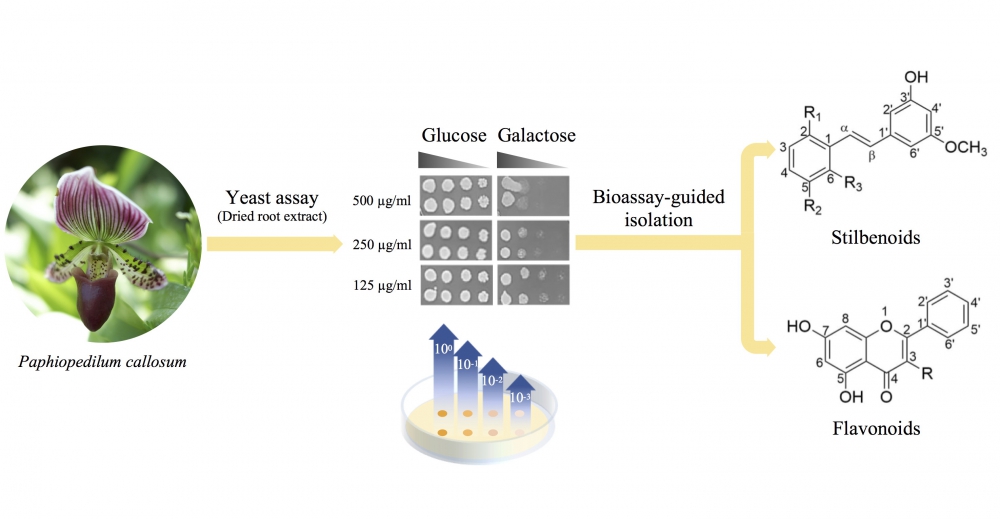JOURNAL 1298
Records of Natural Products
Year: 2020 Issue: 2 March-April
p.89 - 97
Viewed 4324 times.
-
San Yoon Nwe

-
Chayapol Tungphatthong

-
Areerat Laorpaksa

-
Boonchoo Sritularak

-
Witchuda Thanakijcharoenpath

-
Somboon Tanasupawat

-
Suchada Sukrong

GRAPHICAL ABSTRACT

ABSTRACT
Paphiopedilum callosum (Rchb.f.) Stein belongs to the Orchidaceae family. The phytochemistry and bioactivities of this plant have not been reported. In this study, a bioassay-guided isolation with a yeast cell-based assay was performed to isolate topoisomerase I poison compounds from the roots of P. callosum. One new and five known compounds were isolated. According to their spectroscopic data (ESI-MS, NMR, IR and UV), the new compound (1) is 3′-hydroxy-2,6,5′-trimethoxystilbene. The known compounds (2-6) were identified by comparing their spectroscopic data with those in the literature. According to the yeast cell-based assay, all the compounds were topoisomerase Ι poisons based on their ability to inhibit the growth of yeast cells. As further confirmation, the cytotoxic activities of the isolated compounds were evaluated using human cancer cell lines (MCF-7 and NCI-H187). The compounds exhibited varying degrees of cytotoxicity on the representative cell lines. These isolated compounds could serve as new lead compounds in the development of cancer chemotherapeutics.
KEYWORDS- Paphiopedilum callosum
- Orchidaceae
- yeast cell-based assay
- topoisomerase Ι poison
- stilbene